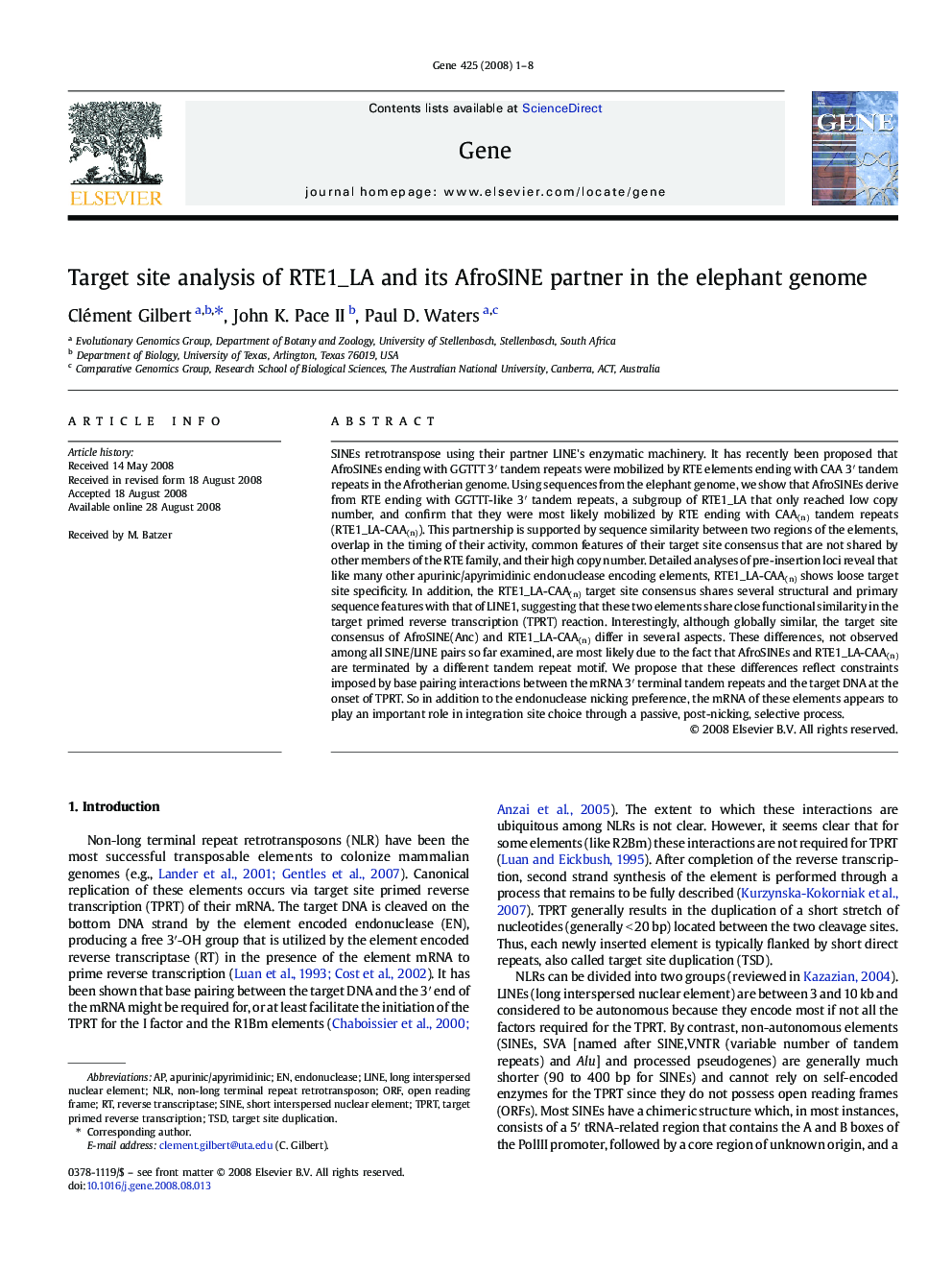| کد مقاله | کد نشریه | سال انتشار | مقاله انگلیسی | نسخه تمام متن |
|---|---|---|---|---|
| 2819162 | 1569906 | 2008 | 8 صفحه PDF | دانلود رایگان |
عنوان انگلیسی مقاله ISI
Target site analysis of RTE1_LA and its AfroSINE partner in the elephant genome
دانلود مقاله + سفارش ترجمه
دانلود مقاله ISI انگلیسی
رایگان برای ایرانیان
کلمات کلیدی
ORFTSDNLRTPRTapurinic/apyrimidinic - apurinic / apyrimidinicEndonuclease - آندونوکراسیSINE - آنهاReverse transcriptase - ترانس کریپتاز معکوس یا وارونویسTarget site duplication - تکثیر سایت هدفLINE - خط LINELong Interspersed Nuclear Element - عنصر هسته ای درهم تنیدگی طولانیshort interspersed nuclear element - عنصر هسته ای مشتق شده کوتاهopen reading frame - قاب خواندن باز
موضوعات مرتبط
علوم زیستی و بیوفناوری
بیوشیمی، ژنتیک و زیست شناسی مولکولی
ژنتیک
پیش نمایش صفحه اول مقاله

چکیده انگلیسی
SINEs retrotranspose using their partner LINE's enzymatic machinery. It has recently been proposed that AfroSINEs ending with GGTTT 3â² tandem repeats were mobilized by RTE elements ending with CAA 3â² tandem repeats in the Afrotherian genome. Using sequences from the elephant genome, we show that AfroSINEs derive from RTE ending with GGTTT-like 3â² tandem repeats, a subgroup of RTE1_LA that only reached low copy number, and confirm that they were most likely mobilized by RTE ending with CAA(n) tandem repeats (RTE1_LA-CAA(n)). This partnership is supported by sequence similarity between two regions of the elements, overlap in the timing of their activity, common features of their target site consensus that are not shared by other members of the RTE family, and their high copy number. Detailed analyses of pre-insertion loci reveal that like many other apurinic/apyrimidinic endonuclease encoding elements, RTE1_LA-CAA(n) shows loose target site specificity. In addition, the RTE1_LA-CAA(n) target site consensus shares several structural and primary sequence features with that of LINE1, suggesting that these two elements share close functional similarity in the target primed reverse transcription (TPRT) reaction. Interestingly, although globally similar, the target site consensus of AfroSINE(Anc) and RTE1_LA-CAA(n) differ in several aspects. These differences, not observed among all SINE/LINE pairs so far examined, are most likely due to the fact that AfroSINEs and RTE1_LA-CAA(n) are terminated by a different tandem repeat motif. We propose that these differences reflect constraints imposed by base pairing interactions between the mRNA 3â² terminal tandem repeats and the target DNA at the onset of TPRT. So in addition to the endonuclease nicking preference, the mRNA of these elements appears to play an important role in integration site choice through a passive, post-nicking, selective process.
ناشر
Database: Elsevier - ScienceDirect (ساینس دایرکت)
Journal: Gene - Volume 425, Issues 1â2, 1 December 2008, Pages 1-8
Journal: Gene - Volume 425, Issues 1â2, 1 December 2008, Pages 1-8
نویسندگان
Clément Gilbert, John K. II, Paul D. Waters,